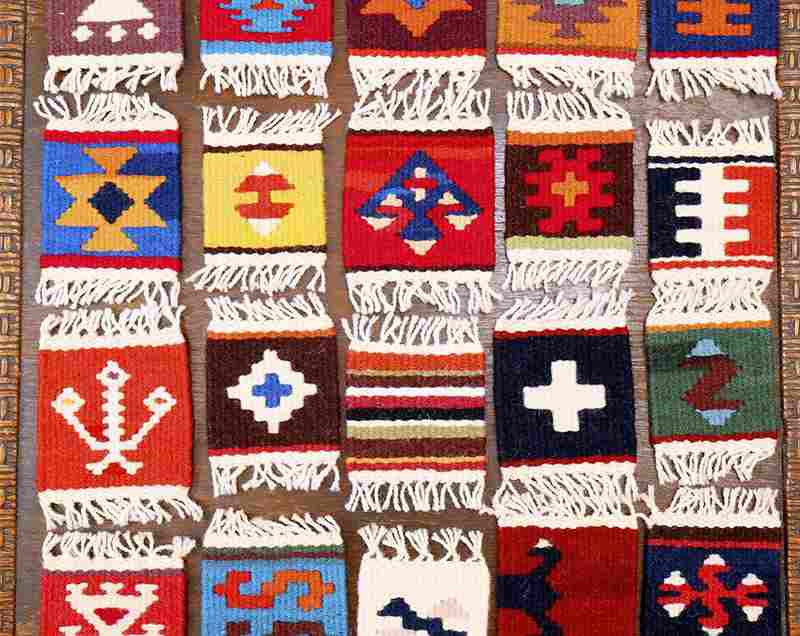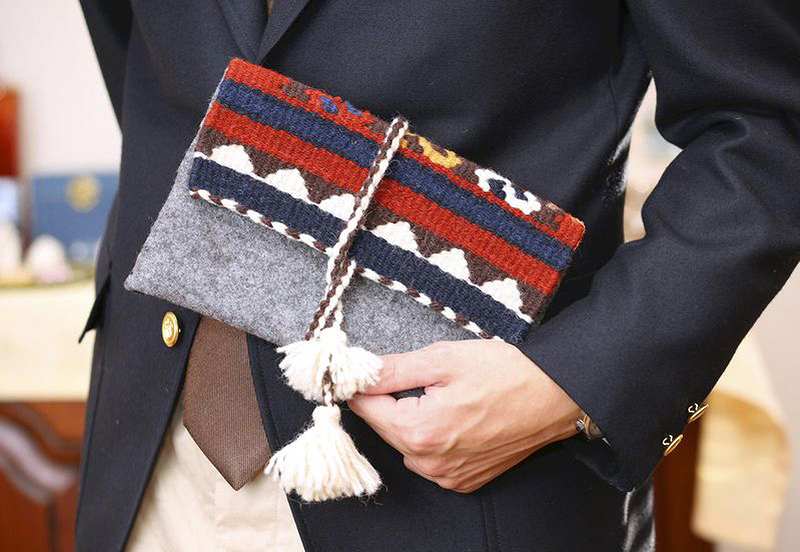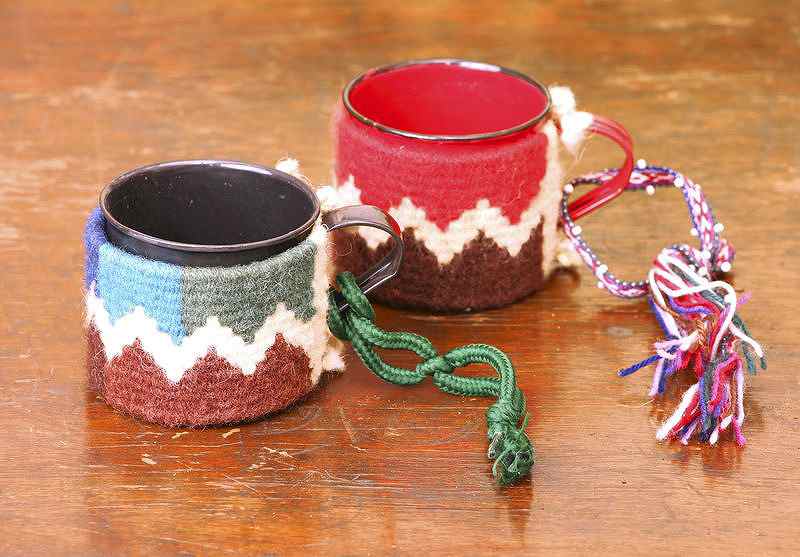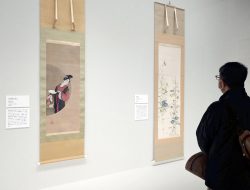
Colorful Kilim coasters with different motifs, each of which has a different meaning
10:59 JST, March 10, 2022
Kilim, a traditional hand-woven fabric, gives a feeling of warmth and adds a tasteful touch to your life. Those made in Turkey are known for their bold color combinations and exotic geometric patterns. Kilim is so versatile, it is used to make items ranging from rugs to bags. You can also weave it by yourself.
Kilim and its weaving techniques have been handed down among nomads in and around the Middle East, with Turkey being a major production base. Its origin is believed to date back thousands of years.
In addition to serving as everyday items such as rugs and bags, it has been used to make as interior ornaments, too.
Kilim is traditionally woven by nomadic women during breaks in their housework and child-rearing. Finished items often have uneven color tones and asymmetrical motifs.

A clutch bag with Kilim fabric on top and thick felt on the bottom

Kilim covers to keep the contents of mugs warm
“The spontaneous feature is the greatest charm of Kilim,” said Yukiko Koyun, who teaches Kilim weaving. “There are some errors in the weaving, but that is rather accepted as giving it a human touch. I feel warmth from it.”
Koyun was born in Nagasaki Prefecture in 1967. She moved to Turkey in 1996 and learned to make Kilim. In 1998, she started teaching Kilim weaving techniques at home. She now gives classes in Tokyo and Kanagawa prefectures. She also has a video on how to make Kilim on her YouTube channel.
Kilim is mainly used to create large rugs in Turkey.
In contrast, Koyun recommends making coasters, 10 by 10 centimeters, saying that the compact size makes it easier for people to use in their daily lives. By using thicker yarn, even a beginner can finish a piece with a simple motif in a few hours.
The weaving process is not very complicated. The warp threads are stretched over a wooden frame, which serves as a simple loom. The weft yarn is interwoven with the warp threads from left to right and vice versa repeatedly. When weaving, the weft threads need to occasionally be pressed close to each other with a comb, applied from above so its teeth go through the warp threads, to make the piece more durable.
“Once you get the hang of the technique, you can weave whenever you want and wherever you are,” Koyun said. “It may make you feel refreshed because you need to concentrate when doing it and you end up forgetting other things during that time.”
The patterns have been handed down from generation to generation, including symbols to ward off evil spirits and pray for good harvests and happiness.
A diamond-shaped eye-like pattern, for example, is a motif to protect someone from the gaze of evil people. And a star-shaped motif represents a wish for happiness. Motifs differ between tribes and regions, Koyun says.
The number of nomads has decreased over the years, as they have become more settled. The traditional culture of weaving Kilim for home use is disappearing, Koyun says.
She places importance on using color schemes and patterns of old Kilim pieces to pay respect to the people of the past.
“When you use Kilim items in your daily life, their powerful colors and patterns make you feel happy,” Koyun said. “I believe that having time for weaving by yourself will also enrich your life.”
Delightful, easy to make at home

When making Kilim, the weft thread is crossed through the warp threads
To weave Kilim at home, all you need to have is a wooden frame, a comb and thick yarn, all available at stores. “To learn the basic weaving technique, I recommend making a coaster with horizontal stripes,” Koyun said.
The point is to arrange opposite colors side by side as much as possible to make them stand out from each other, instead of using color gradations.
“Finishing one small item makes you feel fulfilled, and you will enjoy weaving,” Koyun said.
In her book, “Hajimete no Chiisana Kilim to Komonotachi” (Making your first small Kilim items) by the Nihonbungeisha publishing company, Koyun also explains how to make a clutch bag and other items. A basic kit of tools and materials to make Kilim is available online at https://kilimkoyun.thebase.in/ for ¥3,800.
"Culture" POPULAR ARTICLE
-

Van Cleef & Arpels Dazzles with Art Deco Artisanry at Tokyo Exhibit
-

Disney’s ‘Twisted-Wonderland’ Animated Series Puts Villains in Spotlight: New Show Features School Inspired by Classic Disney Films
-

Ayumi Hamasaki’s Shanghai Concert Canceled Day Before Schedule as Part of Beijing Backlash
-

‘The World Masterpiece Theater Series’ Celebrates 50 Years; Animator Looks Back on Creating Anime Classics
-

Popularity of Piggy Banks Across Time and Place Seen at Bank’s Museum of Money Boxes in Hyogo Pref.
JN ACCESS RANKING
-

Tokyo Economic Security Forum to Hold Inaugural Meeting Amid Tense Global Environment
-

Keidanren Chairman Yoshinobu Tsutsui Visits Kashiwazaki-Kariwa Nuclear Power Plant; Inspects New Emergency Safety System
-

Imports of Rare Earths from China Facing Delays, May Be Caused by Deterioration of Japan-China Relations
-

University of Tokyo Professor Discusses Japanese Economic Security in Interview Ahead of Forum
-

Japan Pulls out of Vietnam Nuclear Project, Complicating Hanoi’s Power Plans
























